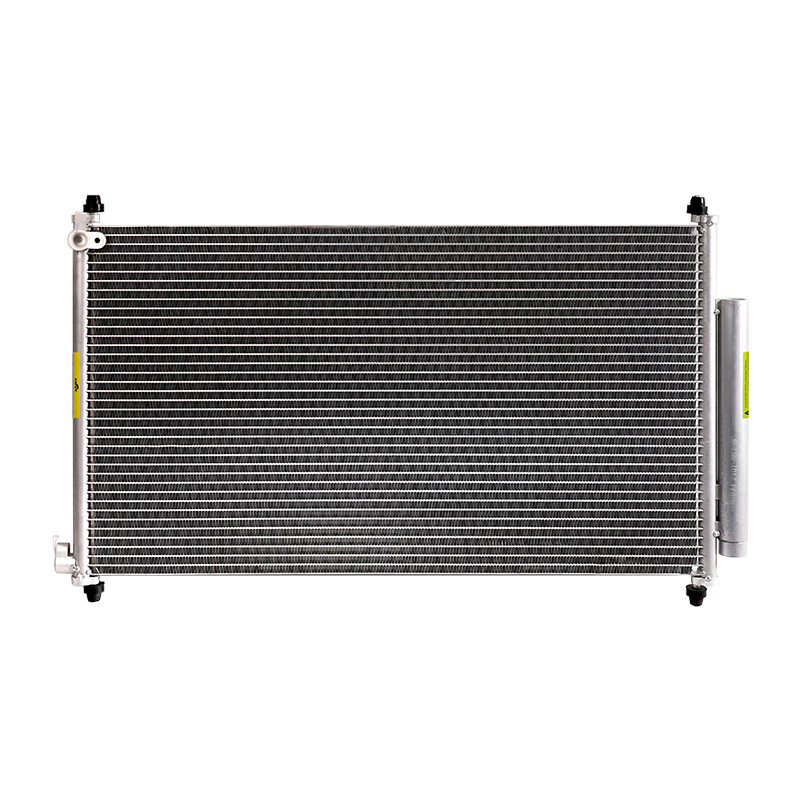2024-12-04
Yes, the greenhouse effect can be reduced by optimizing the condenser technology to reduce refrigerant leakage. This requires optimization in many aspects, including equipment design, material selection, process improvement, monitoring technology, and refrigerant management.
Improve welding technology (such as laser welding) and pipe connection methods (such as using high-performance gaskets) to reduce the risk of leakage at the interface. Reduce the number of joints and connection points through integrated design to reduce the possibility of leakage points from the source.
Adopt a more compact structural design, such as a microchannel condenser, to make the refrigerant flow path more closed and efficient, while reducing the amount of refrigerant exposed to the outside. Introduce a partition control design in the fluid path so that problems in a certain area will not affect the entire system, further reducing the impact of leakage.
Use highly corrosion-resistant materials (such as stainless steel, titanium alloy, or aluminum alloy with anti-corrosion coating) to reduce the risk of leakage caused by material aging and corrosion.
Use new sealing materials (such as polymers) or nanocomposites to enhance the durability and chemical resistance of sealing components. Develop self-healing materials that can automatically repair when leaking to provide an additional layer of protection for the condenser.
Improve the machining accuracy of condenser components, such as through CNC machining and seamless tube manufacturing processes, to reduce minor defects that may cause leakage.
Perform strict air tightness tests and pressure tests on condensers before they leave the factory to ensure that there are no micro-leaks or welding defects. Use non-destructive testing technologies (such as ultrasonic testing and X-ray imaging) for in-depth quality control.
Integrate sensors (such as pressure sensors, temperature sensors, and refrigerant leak detectors) in the condenser system to monitor refrigerant flow and leakage in real time.

Use IoT technology to connect the condenser monitoring system, and implement early warning and automatic shutdown mechanisms for refrigerant leakage through data analysis. Combine artificial intelligence technology to optimize condenser operating parameters and reduce the flow of refrigerant during non-essential periods, thereby reducing the risk of leakage.
Replace traditional refrigerants with high GWP (global warming potential) (such as R134a) with low GWP or natural refrigerants (such as R1234yf, R744/CO₂). Optimize the refrigerant charge to avoid pressure abnormalities and leakage problems caused by excessive or improper charging.
Refrigerant that may leak in the system can be collected through refrigerant recovery equipment for reuse, reducing direct emissions to the environment.
Establish a regular inspection and maintenance plan for condensers, including inspection of welds, interfaces, seals and other parts prone to leakage. Clean the surface and internal dirt of the condenser to avoid pressure increase and refrigerant leakage caused by blockage.
Strengthen the training of operators to ensure that they follow the specifications during the installation, operation and maintenance of the condenser to avoid leakage problems caused by human factors.
Research condenser materials and structures with self-healing functions, which can repair themselves when tiny cracks or leaks occur.
Combine the condenser with a carbon capture device to absorb part of the carbon dioxide simultaneously when the refrigerant leaks, reducing the overall emission of greenhouse gases.
Develop a fully enclosed condenser, avoid the leakage risk of traditional component connections through integrated manufacturing, and move towards "zero leakage".
Through these optimization measures, refrigerant leakage in the condenser can be significantly reduced, thereby reducing the impact on the environment and the intensification of the greenhouse effect. At the same time, these improvements can not only improve the service life and economic benefits of the condenser, but also promote the industry to develop in a more environmentally friendly and efficient direction.